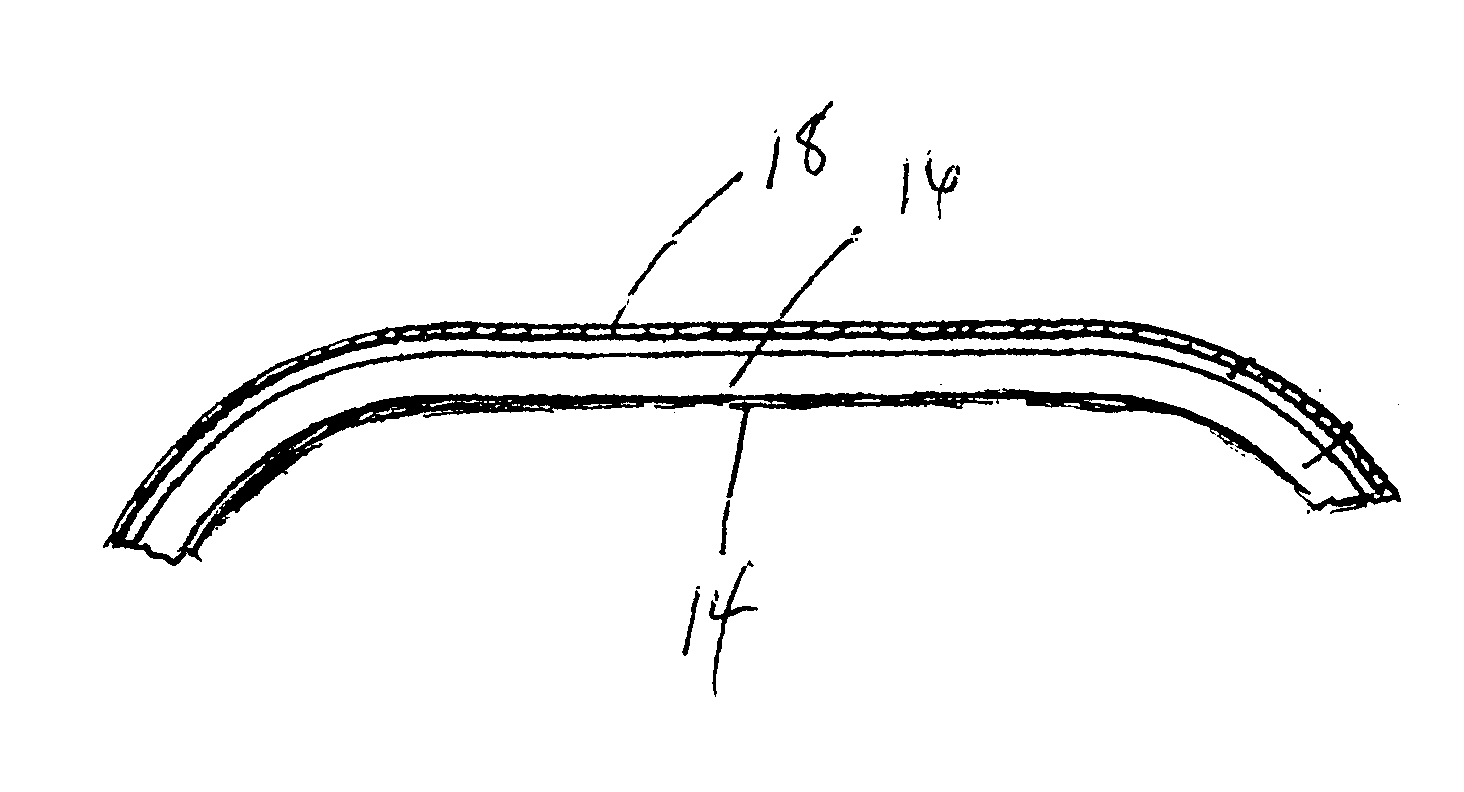Anti-osteoarthritis and anti-hypothermia garment
a technology of hyperthermia and anti-osteoarthritis, applied in the field of anti-osteoarthritis and anti-hypothermia garments, can solve the problems of slow repair rate, pain, swelling and loss of motion, and difficult to achieve "cure"
- Summary
- Abstract
- Description
- Claims
- Application Information
AI Technical Summary
Benefits of technology
Problems solved by technology
Method used
Image
Examples
Embodiment Construction
Although only one preferred embodiment of the invention is explained in detail, it is to be understood that the invention is not limited in its scope to the details of construction and arrangement of components set forth in the following description or illustrated in the drawings. The invention is capable of other embodiments and of being practiced or carried out in various ways. Also, in describing the preferred embodiment, specific terminology will be resorted to for the sake of clarity. It is to be understood that each specific term includes all technical equivalents which operate in a similar manner to accomplish a similar purpose.
An anti-arthritis, anti-osteoarthritis, and an anti-hypothermia garment 10 for providing coverage to a body joint 12 according to the present invention is illustrated in the drawings. The garment 10 shown encompasses the elbow. However, this invention includes garments to cover all other body joints and the entire body or body parts of the human anatom...
PUM
| Property | Measurement | Unit |
|---|---|---|
| temperature | aaaaa | aaaaa |
| flexible | aaaaa | aaaaa |
| lightweight flexible | aaaaa | aaaaa |
Abstract
Description
Claims
Application Information
 Login to View More
Login to View More - R&D
- Intellectual Property
- Life Sciences
- Materials
- Tech Scout
- Unparalleled Data Quality
- Higher Quality Content
- 60% Fewer Hallucinations
Browse by: Latest US Patents, China's latest patents, Technical Efficacy Thesaurus, Application Domain, Technology Topic, Popular Technical Reports.
© 2025 PatSnap. All rights reserved.Legal|Privacy policy|Modern Slavery Act Transparency Statement|Sitemap|About US| Contact US: help@patsnap.com


